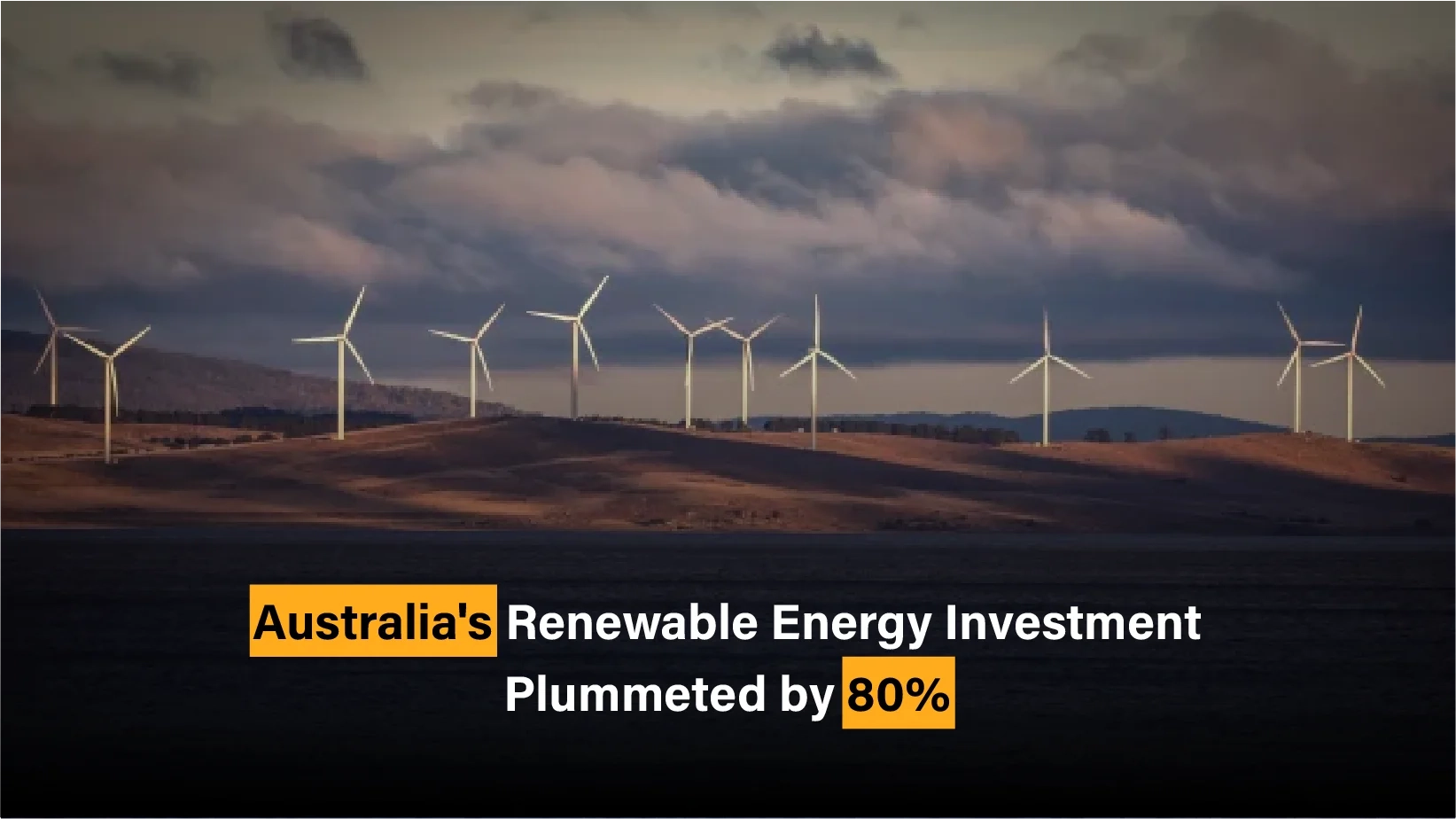Decoding the Puzzle: Why Australia’s Renewable Energy Investment Plummeted by 80%

Australia’s ambitious target of reaching 82% renewables by 2030 faces significant challenges as investment in large-scale renewable projects sees an astonishing 80% reduction. The government’s commitment to the target remains, but hurdles in engineering and financial realms doubt its achievability.
Reasons of Renewable Energy Investment Dropped in Australia:

Government’s Accelerated Approval Process:
Recent changes in Victoria’s planning approvals aim to speed up renewable energy projects. Premier Jacinta Allan’s efforts highlight the need for private investment. However, these changes lead to a drastic drop in investment.
Policy Missteps and Market Perception:
Critics say the drop in investment is because of mistakes in policies. They think private money is needed for renewable energy projects. The global market prefers to invest in something other than renewable energy in Australia, which worsens things.
Technical Hurdles and Energy Demand:
Technical limitations, including storage capacity and intermittency issues, pose challenges in ensuring a reliable renewable energy supply. The current energy demand, exemplified by the need for 14 gigawatts of additional renewable energy in the National Electricity Market (NEM), underscores the urgency for alternative strategies. Meanwhile, the Net Zero Australia project determined that achieving this goal by 2050 will require approximately 40 times the total generation capacity of the current national electricity market.
Policy Uncertainty:
In Australia, the need for clear and consistent government policies regarding renewable energy investment has contributed significantly to the decline in investment. Investors hesitate to commit funds due to uncertainty about future regulations and incentives.
Financial Concerns:
The high upfront costs of renewable energy projects and market fluctuations have made investors wary of committing to long-term projects. Fluctuations in the market add to the uncertainty surrounding renewable energy investments.
Technical Challenges:
Renewable energy sources face technical limitations such as storage capacity and intermittency, affecting their reliability. These challenges make meeting ambitious renewable energy targets difficult, further discouraging investment.
Global Competition:
Australia’s competitiveness in the global capital market for renewable energy investment has diminished. Investors seek better opportunities elsewhere due to perceived risks and uncertainties in Australia’s renewable energy sector.
Viability of Targets:
Despite maintaining renewable energy targets, achieving them appears increasingly unrealistic. Existing targets may need reassessment to align with practical and feasible outcomes.
Security Concerns:
Growing concerns about security risks associated with reliance on foreign suppliers, especially in the electric vehicle sector, have impacted investment. Potential vulnerabilities arise from importing EV components, particularly from countries like China.
Transparency Issues:
There needs to be more transparency in government decision-making processes. Particularly concerning environmental approval laws. Limited access to information hinders public understanding and scrutiny of key legislative matters.
Call for Clarity and Collaboration:
The current state of renewable energy investment demands clarity in policy formulation and increased collaboration among stakeholders. Meaningful engagement, transparent processes, and proactive measures are essential to address existing challenges and steer Australia’s renewable energy agenda toward success.
Challenges to Renewable Energy Targets:
- Inconsistent government policies create uncertainty.
- Stable and supportive policies are needed to attract investment and foster innovation.
- Addressing gaps crucial for unlocking renewable energy potential.
- Limited storage capacity and intermittency affect reliability.
- Challenges integrating renewable energy into existing infrastructure.
- High upfront costs deter investment.
- Additional targets for electric vehicles strain resources and confidence.
Final Verdict:
Australia wants to use renewable energy by 2030. However, investment in renewable projects dropped a lot, like 80%. The government tried to speed up the approval process for these projects, but it worried investors. They said it’s hard to make money with renewable energy in Australia. Also, meeting renewable energy goals seems almost impossible and challenging because there’s not enough investment, and there isn’t enough technology yet. There are also worries about the security of electric cars and where we get our technology from. Overall, Australia’s plans for renewable energy are facing big problems and need to be rethought.

Similar Posts
The Ultimate Guide to Enterprise SEO
6 Green Computing Examples: Revolutionizing Technology with Sustainable Systems
Can MeisterTask Revolutionize Your Project Management Game?